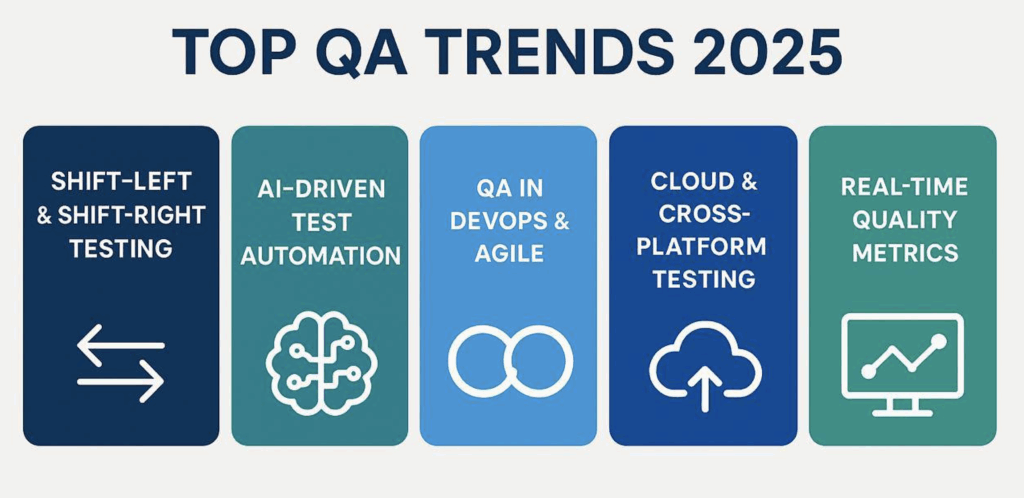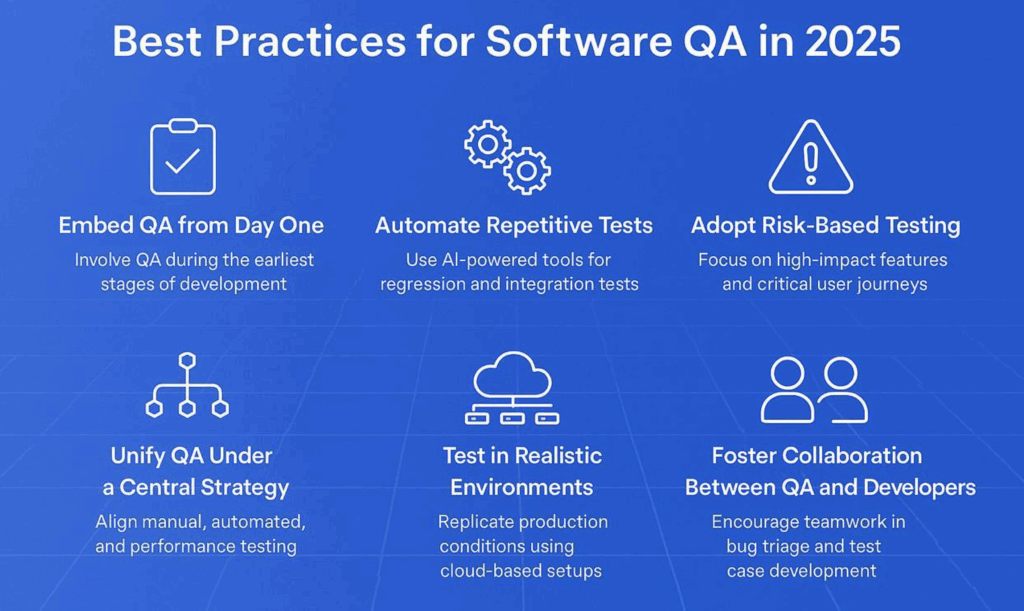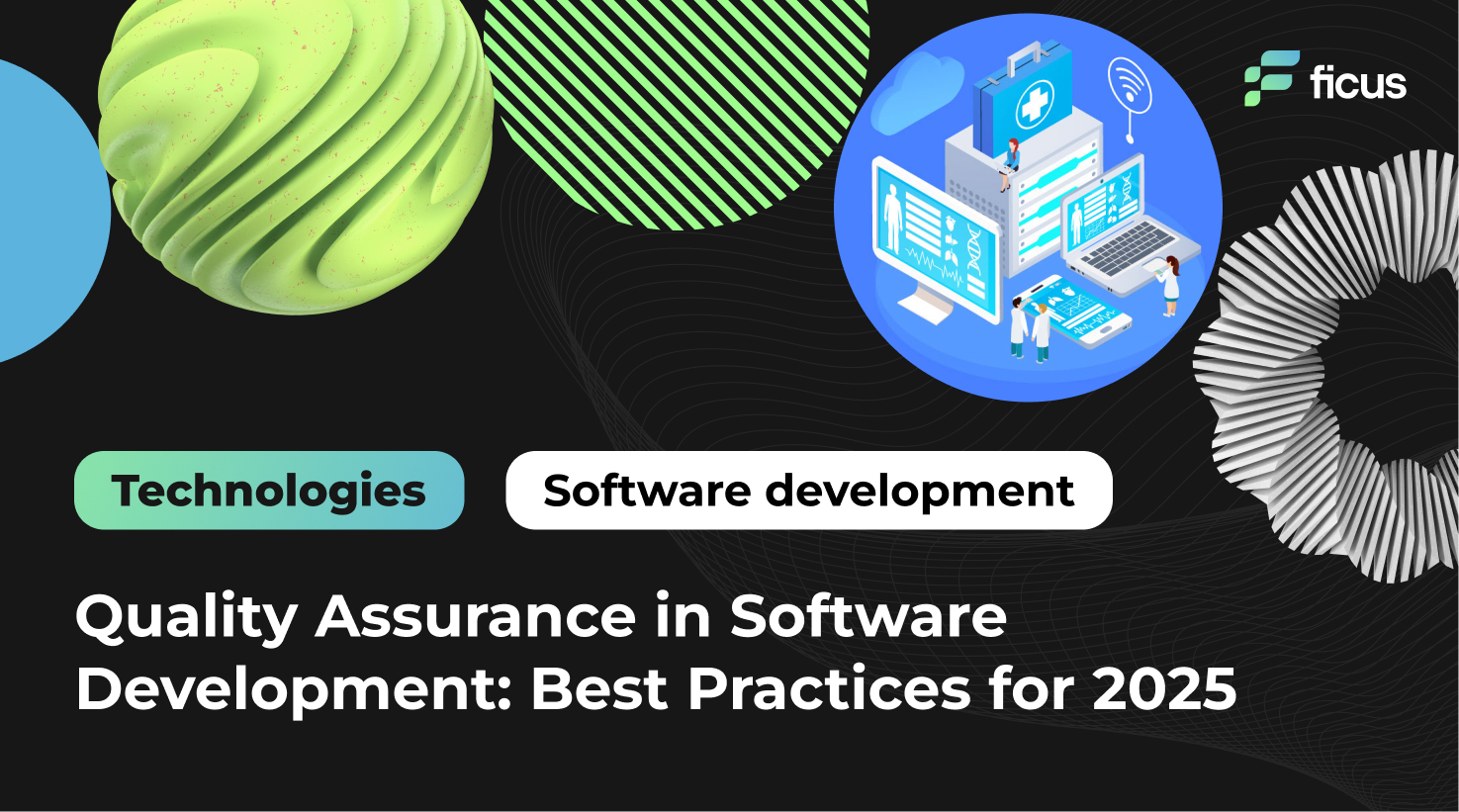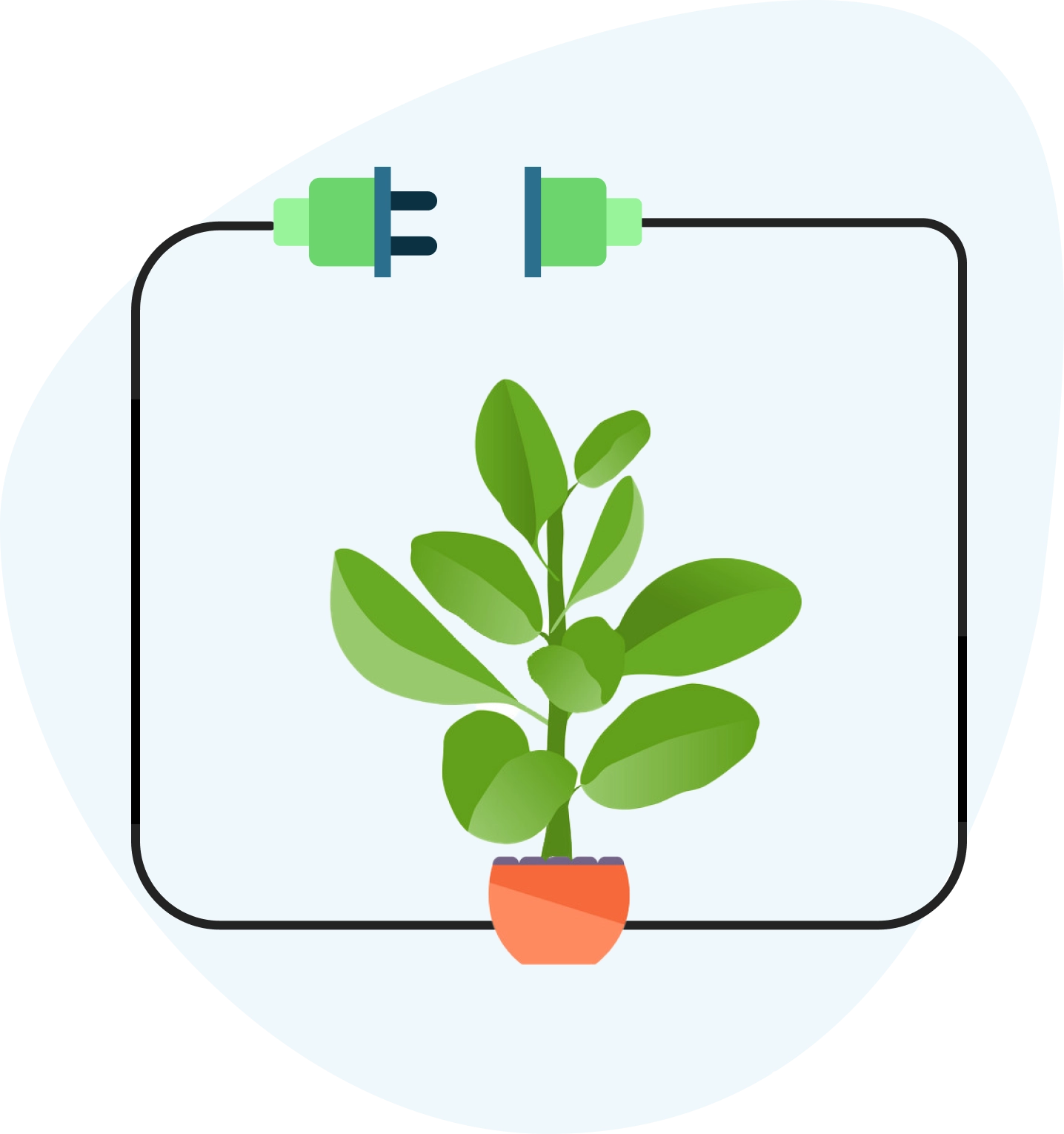In the fast-paced world of software development, delivering products quickly is no longer enough—quality is the new benchmark for success. As user expectations rise and digital ecosystems grow more complex, ensuring software reliability, security, and performance has become a non-negotiable requirement. In 2025, Quality Assurance (QA) is not just a testing phase—it’s a continuous, integrated process that shapes the entire development lifecycle.
Modern QA goes beyond bug detection. It involves proactive risk mitigation, compliance with global standards, automation at scale, and real-time feedback loops. From AI-powered test suites to DevOps integration and shift-left strategies, QA practices have evolved to match the demands of cloud-native architectures and agile delivery models.
This article breaks down the current state of QA in 2025, highlights key trends, and outlines actionable best practices for building reliable software in today’s high-speed digital environment.
CTOs and engineering leads aiming to reduce post-release risks.
QA leaders modernizing testing strategies.
Business decision-makers seeking scalable QA solutions in 2025.
- QA in 2025 is about continuous validation, automation, and user-centric quality.
- Shifting QA left ensures faster bug detection and better collaboration.
- AI, cloud testing, and real-time analytics redefine QA processes.
What QA Means in 2025
Quality Assurance today is not a checkpoint but an always-on framework. It includes test automation, performance benchmarking, regulatory compliance, and multi-environment quality validation. The goal extends far beyond functional correctness — it’s about ensuring seamless, secure, and trustworthy digital experiences.
In a CI/CD environment, QA is embedded at every stage of the pipeline, from planning to production monitoring. This integration shortens release cycles and provides stakeholders with transparent quality insights in real time.
Top QA Trends Reshaping Development in 2025
- Shift-Left and Shift-Right Testing
Testing starts early, at the requirements stage (shift-left), and continues into production with real-time monitoring (shift-right). This dual approach helps identify defects before they become costly while ensuring quick remediation of live issues. - AI-Driven Test Automation
AI now generates test cases automatically, detects flaky tests, and prioritizes high-risk scenarios. This improves coverage and reduces regression cycles by up to 40%, freeing QA teams to focus on exploratory testing and usability. - QA in DevOps and Agile Workflows
QA is a shared responsibility. Integrated into DevOps, quality checks run continuously across sprints. Developers, QA engineers, and product managers collaborate on real-time dashboards, ensuring that releases are both fast and stable. - Cloud-Based and Cross-Platform Testing
Applications must run across hundreds of devices, browsers, and networks. Cloud testing platforms simulate real-world conditions, enabling teams to scale testing environments instantly without hardware investment. - Real-Time Quality Metrics
Defect leakage, test coverage, release health, and customer impact are tracked in live dashboards. These KPIs provide leadership with data-driven confidence in release readiness and allow QA leaders to justify investments with measurable outcomes.

Best Practices for Software QA in 2025
In 2025, quality assurance is not just a checkpoint at the end of the development pipeline—it is the backbone of reliable, scalable, and user-focused software. Businesses that succeed in delivering high-performing applications share a common approach: they embed QA into their culture, automate wherever possible, and align quality goals with business outcomes. Below are the practices shaping effective QA strategies today.
- Embed QA from Day One
Bringing QA engineers into the earliest phases of development prevents problems before they surface. By participating in requirement reviews and architectural discussions, QA professionals help identify ambiguities, highlight potential risks, and ensure that technical specifications align with user expectations. This proactive approach saves time, reduces costly rework, and strengthens the link between business goals and product functionality. - Automate Repetitive Tests
Automation has moved beyond simple regression scripts. AI-powered tools in 2025 can self-heal when the UI changes, automatically generate test cases from user stories, and prioritize the most business-critical scenarios. Automating smoke, regression, and integration tests accelerates release cycles, improves accuracy, and allows QA specialists to focus on exploratory testing, usability assessments, and security validation. - Adopt Risk-Based Testing
Every product feature carries a different level of risk. Core processes such as authentication, payment flows, and compliance-related functionality require stricter validation than low-impact UI updates. Risk-based testing ensures resources are directed to the areas where failure would cause the greatest harm to revenue, security, or customer trust. This method optimizes time, maximizes impact, and provides stronger business assurance.

- Unify QA Under a Central Strategy
Modern development cycles often include a mix of automated testing, manual verification, performance benchmarking, and security audits. Without a unified QA strategy, these efforts risk becoming fragmented and inconsistent. Centralizing QA practices under a single framework establishes standard metrics, reporting practices, and accountability structures. It also gives stakeholders a clear and comprehensive view of product health at any stage of development. - Test in Realistic Environments
One of the most common sources of post-release issues is the gap between test conditions and production environments. Cloud-based infrastructure and containerized setups now allow QA teams to replicate real-world scenarios such as peak traffic, integration with external APIs, or device fragmentation. This level of realism ensures applications behave reliably under real-world stress, minimizing unexpected failures and downtime. - Foster Collaboration Between QA and Developers
The traditional separation between QA and development is disappearing. In agile and DevOps environments, quality is seen as a shared responsibility. Developers are expected to write unit and integration tests, while QA engineers provide expertise in user journeys, edge cases, and performance. Daily collaboration, shared dashboards, and open defect ownership foster a culture where everyone contributes to product quality. This not only accelerates issue resolution but also improves morale by aligning teams around a common mission: delivering value to the end user.
Ready to find out more about optimizing your QA process?
Contact UsConclusion
In 2025, quality is the foundation of successful software. A strong QA strategy reduces risks, accelerates time-to-market, and builds trust among users. With modern testing approaches — from AI automation to cloud-based validation — businesses can release faster without compromising reliability.
Whether building a SaaS platform, mobile application, or enterprise solution, QA is no longer optional. It is a strategic enabler of innovation and growth.
Why Ficus Technologies?
At Ficus Technologies, we position QA as a core driver of product success. Our approach goes beyond testing — we embed quality into every stage of development, ensuring confidence from concept to release.
- Dedicated QA teams and flexible engagement models
- Automated test frameworks tailored to your stack
- Full-cycle manual and exploratory testing
- Real-device and cross-platform validation environments
- CI/CD-integrated QA reporting and live dashboards
- Compliance testing for regulated industries like fintech and healthcare
With more than 12 years of expertise in high-scale SaaS, enterprise software, and mobile apps, we deliver QA strategies that align with your business goals — enabling you to release faster, safer, and smarter.
Absolutely. QA ensures those tools deliver reliable results. Automation alone doesn’t guarantee quality—QA provides oversight, validation, and user-focus.
Many repetitive tests (e.g., regression, API, smoke) should be automated. But exploratory, usability, and edge case testing still require human insight.
Early QA reduces bug-fixing costs, accelerates delivery, and prevents expensive post-release failures—offering significant long-term ROI.
We use real-device testing, cross-browser automation, and cloud-based simulation environments to ensure compatibility across devices and operating systems.
Yes. We assess your current QA strategy, identify gaps, and implement automation frameworks, CI/CD integration, and reporting improvements tailored to your needs.








